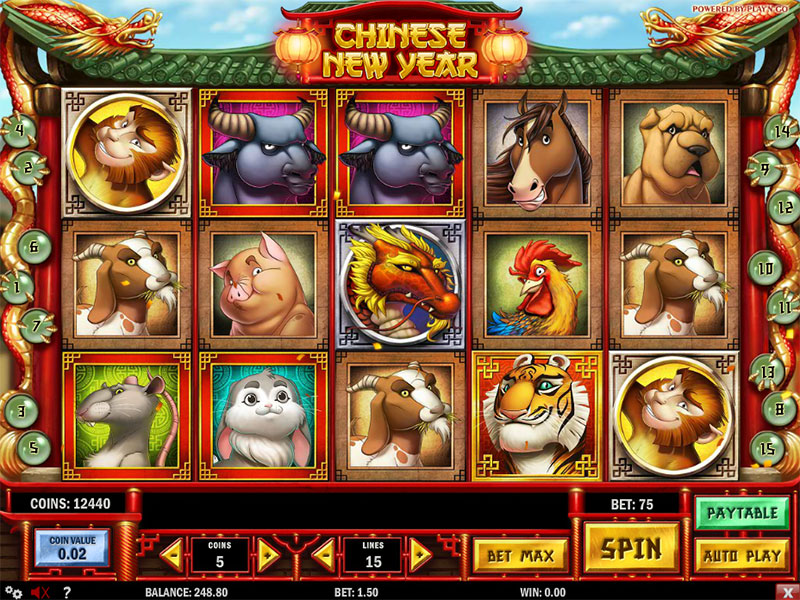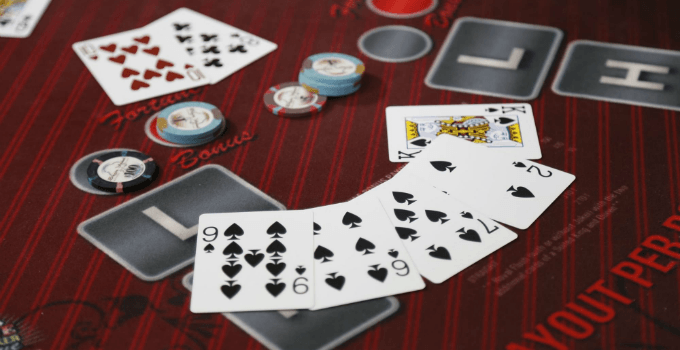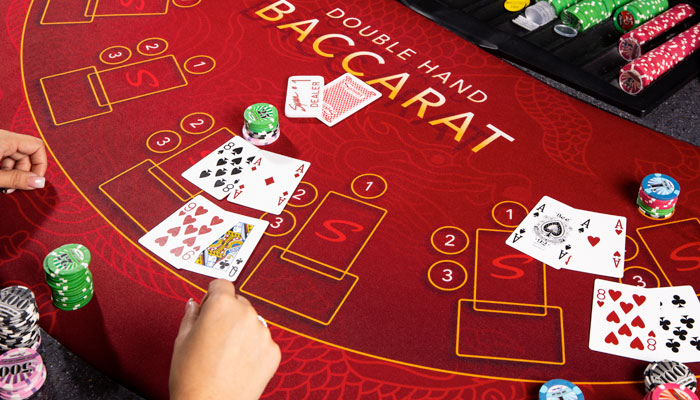Chinese Mahjong is a game for four players that originated in China. Chinese Mahjong involves skill, strategy, and calculation, as well as a certain degree of chance. Depending on the variation which is played, luck can be anything from a minor to a dominant factor in success.
- Few gambling games are more popular with Asian gamblers than Mahjongg. Like the Chinese dominoes games already discussed, Mahjongg is played with tiles. It’s normally played with 4 people, and the rules resemble those for the traditional Western card.
- Traditionally, most non-hardcore gamblers will play some form of gambling during the Chinese New Year as it is believed the new year brings in fresh new luck, and Chinese Blackjack is one of the most popular games to be played during the new year. The game uses one or two 52-card deck (s) and is playable by any number of players.
- Sonic.jsc introduce Loy 999 Khmer Card Games and Slot games, which has newest features for young Khmer people with latest technology in the world: 5-star animations like Naga World in the real; the crowded and vibrant player community; the live streaming technology without lag - 24/7 customer care system to support anytime, anywhere The newest features in Loy999 - Khmer Card Game, Slots.
- Baccarat (bah’-ca-rah) is one of the easiest games to learn and offers some of the best odds in the casino. The “player” and the “banker” each receive two cards with the object being to get a point total closest to 9. Just remember, face cards and tens have no value.
In Asia, Chinese Mahjong is also popularly played as a gambling game. In the game, each player is dealt either thirteen or sixteen tiles in a hand (depending on the variation being played). On their turn, players draw a tile and discard one, with the goal of making four or five melds (also depending on the variation) and one pair, or 'head'. (Casino in Macau)
Winning comes 'on the draw', by drawing a new or discarded tile that completes the hand. Thus a winning hand actually contains fourteen (or seventeen) tiles.One of the myths of the origin of Chinese Mahjong suggests that Confucius, the great Chinese philosopher, had developed the game in about 500 BC.
Chess Cards have names of Chinese Chess pieces written on each card, and are found in sets containing each piece in two or four colours. The four colour cards are used for the rummy-like game Si Se Pai. Number cards are used in western China, for example in the cities Xian and Guilin. There are two 'suits', one with plain Chinese numerals.
This assertion is likely to be apocryphal. According to this myth, the appearance of the game in the various Chinese states coincided with Confucius' travels at the time he was teaching his new doctrines. (Chinese Slots)Also, this myth claims that Confucius was fond of birds, which would explain the name 'Chinese Mahjong' (sparrow).

However, there is no evidence of Chinese Mahjong's existence before the Taiping era in the 19th century, which eliminates Confucius as a likely inventor.
There is still a healthy debate about who created the game. One theory is that Chinese army officers serving during the Taiping Rebellion created the game to pass the time.
Another theory is that a noble living in the Shanghai area created the game between 1870 and 1875. Others believe that around 1850 in the city of Níngpō two brothers had created Chinese Mahjong from the earlier game of Mǎdiào.
This traditional Chinese game was banned in its homeland in 1949, when the People's Republic of China was founded. The new Communist government forbade any gambling activities, which were regarded as symbols of capitalist corruption. (China Casino Guide)
After the Cultural Revolution, the game was revived, and once again Chinese Mahjong has become a favorite pastime of the Chinese, as well as in Hong Kong, Macau, Taiwan and elsewhere.
CHINESE FAN-TAN
A square is marked in the centre of an ordinary table, or a cube piece of metal is laid on it, the sides being marked 1, 2, 3 and 4.
The banker puts on the table a double handful of small buttons, beads, coins, dried beans, or similar articles, which he covers with a metal bowl, or 'tan koi'.
The players then bet on the numbers, setting their stakes on the side of the square which bears the number chosen. (Chinese Gamble)
(Players can also bet on the corners, for example between No. 2 and No. 3). When all bets are placed, the bowl is detached, and the 'tan kun' or croupier uses a small bamboo stick to remove the buttons from the heap, four at a time, until the final batch is reached.
If it holds four buttons, the backer of No. 4 wins; if three, the backer of No. 3 wins, and so on. A 5% commission is removed from the stake by the banker, and the winner wins three times the amount of his stake thus reduced.
Chinese Fan-Tan is also the name of a card game, played with an ordinary pack, by any number of players up to eight. (Chinese Casino)
When the deal has been certain, the cards are dealt separately, and any that are left over from a stock, which is placed face downwards on the table.
Each player provisions a fixed stake or ante. The first player can enter if he has an ace; if he has not he pays an ante and takes a card from the stock; the second player is then called upon and acts likewise till an ace is played.
This is put face upwards on the table, and the loads are built up from the ace to the king. The pool goes to the player who first gets rid of all his cards. If a player fails to play, having a playable card, he is fined the amount of the ante for every card in the other player’s hands.
Fan Tan used to be the most accepted gambling game among Chinese gamblers but the glory days of Fan Tan have already passed. During the 1890s, Chinese immigrants brought the game to the United States. At that time, every Chinatown in American City had several Fan Tan houses that were always full of enthusiastic gamblers.
Nowadays, you can find Fan Tan in some casinos in Macau as well as in some online gaming sites. Traditional Chinese Fan Tan, not to be confused with the card game of the same name, used to be played with any objects such as coins, dried beans or small buttons on a table with a square marked on it. Fan Tan. The object of the game is pretty simple and odds are 1: 4.
The play begins with the banker puts on the table a pile of objects then covers them with a bowl. Each player has to bet on one of the numbers that mark the four sides of the square, or on one of the corners of the square.
After the bowl is removed, the croupier removes four of the objects each time until the last group remains. If 1 object is left, then the player who placed a bet on 1 wins the pot, and so on.
PAI GOW POKER
Chinese Pai Gow poker (also called Double-hand poker) is an Americanized version of Pai Gow (in that it is played with playing cards bearing poker hand values, instead of Pai Gow's Chinese dominoes).
The games of Chinese Pai Gow poker and Super Pan-9 were created by Sam Torosian and Fred Wolf.The game is played with a standard 52-card deck, plus a single joker. It is played on a table set for six players, plus the dealer. (Play Chinese Poker)
Every player tries to defeat the banker (who may be the casino dealer or one of the other players at the table)

Object of the game
The object of Chinese Pai Gow poker is for a player to create two poker hands out of the seven-card hand he/she is dealt by the dealer: a five-card hand, and a two-card poker hand.
The five-card hand's value must exceed the two-card hands. The two-card hand is often called the hand 'in front' or 'on top', or the 'small' or 'minor' or 'low' hand. (China Casino Guide)
The five-card hand is called the hand 'behind', or the 'bottom' or 'high' or 'big' (as they are placed that way in front of the player, when the player is done setting them).
The deal
The cards are drag your feet, and then dealt to the table in seven face-down piles of seven cards per-pile. Four cards are unused regardless of the number of people playing.
Betting location are assigned a number from 1 to 7, starting with either player is acting as banker that hand, and counting counter-clockwise around the table.
A number from 1 to 7 is randomly chosen (either electronically or manually with dice), then the deal begins with the corresponding position and proceeds counter-clockwise.
One common way of using dice to decide the dealer starting number is to roll three six-sided dice, and then count betting spots clockwise from the first location until the number on the dice is reached.
If a player is not sitting on a exacting spot, the hand is still assigned, but then placed on the discard pile with the four unused cards.
Hand rankings
Five-card hands use standard poker hand rankings with one exemption: in most Nevada casinos, the hand A-2-3-4-5 ranks above a king-high straight, but below the ace-high straight A-K-Q-J-10.
At most casinos in California and Michigan this rule doesn't apply; the A-2-3-4-5 is the lowest possible straight.
The joker plays as a bug, that is, in the five-card hand it can be used to complete a straight or flush if possible; otherwise it is an ace.
In the two-card hand it always plays as an ace, except in several southern Californian casinos where the joker is completely wild.
Chinese Card Game Casino No Deposit
Determining a win
If each of the player's now-separated hands beat the banker's corresponding hand then he wins the bet. If only one of his hands beats the banker then he pushes. If both of his hands lose to the banker then he loses.
On each hand, ties go to the banker (for example, if a player's five-card hand loses to the banker and his two-card hand ties to him then he loses); this gives the banker a small advantage.
If the player fouls his hand, meaning that his low hand outranks his high hand, or that there are an incorrect number of cards in each hand, there will be a penalty: either re-arrangement of the hand according to house rules or forfeiture of the hand.
In casino-banked games, the banker is generally required to set their hand in a pre-specified manner, called the 'house way', so that the dealer does not have to implement any casino strategy in order to beat the players.

When a player is banking, he is free to set the hand however he chooses; however, players have the option of 'co-banking' with the house, and if this option is chosen then the player's hand must also be set in the house way.
Playing-cards were probably invented in China, where they are recorded as early as the 13th century - see David Parlett's page The Chinese Leaf Game. These earliest cards were long and narrow, with suits based on denominations of money. Traditional money cards are still used in some regions, but most Chinese card games are nowadays played with the international 52 card pack, often with red and black jokers added.
Climbing games are widespread. Examples are
- Zheng Shangyou (Struggling Upstream)
- Da Lao Er (Big Two)
- Da San (Big Three)
- Dou Dizhu (Fight the Landlord)
- Gou Ji (Sufficient Rank)
- Băo Huáng (Protect the Emperor)
- Guàn Dàn (Throwing Eggs)
- Gān Dèng Yǎn (Watching Helplessly)

Zheng Fen (Struggling for Points) is a climbing game which also incorporates the characteristic Chinese card values: king=10, ten=10, five=5. The same values are used in the point-trick games Da Bai Fen (Hundred) and Zhao Pengyou (Looking for Friends), Tuolaji (Tractor) and in fishing games such as Chinese Ten.
Other popular games include Gong Zhu (Catch the Pig), which is an enhanced version of Hearts, and Twenty-Four, a game of mental arithmetic.
Fifty-One is a commerce game played in Fujian province in which players try to collect five cards of a single suit.
Money cards typically have three suits (coins, strings and myriads) with cards from 1 to 9 in each, plus some bonus cards. Often there are several copies of each card. The most familiar pack of this type is Mah Jong, which is normally made as a set of tiles rather than cards and is used for a game related to Rummy. Another type are the long, narrow Dongguan cards, used for Quan Dui and other games. The four suited Hakka cards are another type of money cards, used for the trick-taking game Luk Fu.
Chinese Dominoes have numbers of spots from 1 to 6 at each end, so that there are 21 different tiles, but in a set eleven tiles are duplicated, so that there are 32 altogether. Although there are some games (such as Ce Deng or Jie Long) where the tiles are laid out with adjacent ends matching as in Westerm domino games, Chinese dominoes are often used for other types of game: trick taking games (such as Tien Gow), fishing games (such as Tiu U), rummy games (such as Kap Tai Shap), banking games (such as Pai Gow) and solitaire games (such as Xiang Shi Fu).

Chinese Card Game Casino Games
Dominoes are also available in the form of packs of cards. Some have 32 in a set for Tien Gow. More often they come in packs of 84, containing four of each card, which are used for a climbing gameChang Pai, which is described in an article by Anthony Smith and Günther Senst in The Playing-Card volume XXIV No 4.
Chess Cards have names of Chinese Chess pieces written on each card, and are found in sets containing each piece in two or four colours. The four colour cards are used for the rummy-like game Si Se Pai.
Chinese Card Game Casino
Number cards are used in western China, for example in the cities Xian and Guilin. There are two 'suits', one with plain Chinese numerals and the other with the more elaborate formal number characters. Each suit has numbers from 1 to 10, indicated by the character at each end of the card; the twos, sevens and tens are red and the other numbers are black. There are four identical copies of each card, plus 1 or 5 additional cards, making a pack of 81 or 85. A game Two-Ten-Seven played with these cards is described in an article by Isao Umebayashi in The Playing-Card volume XXV No 4.